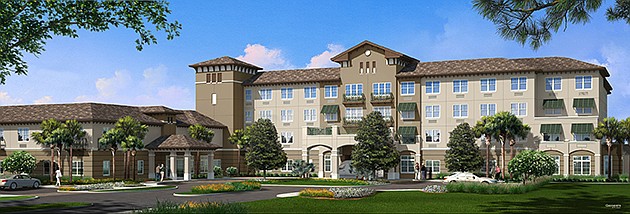- November 25, 2024
-
-
Loading

Loading

Anticipating a “silver tsunami” of aging baby boomers who will likely live longer and be healthier than previous generations, developers have built thousands of new senior housing units along the Gulf Coast in the past five years.
Increasing rental and occupancy rates — especially among assisted-living communities — has fueled an influx of capital into the sector as well. That in turn has led to more development and compressed capitalization rates -- a measure of investment yield — to their lowest level in decades.
The surge in new senior housing, led by assisted-living and memory care communities, comes as the demographics for such development have never been more favorable.
The U.S. Census Bureau notes, for instance, that roughly 10,000 American baby boomers -- born between 1946 and 1964 — turn age 65 each day.
By 2030, one in five Americans will be 65 years old or older, more than double the same age as in 1970, and by 2050, the U.S. population aged 65 and over is projected to rise to nearly 84 million, double that of 2012, the agency reports.
New senior housing in Florida, meanwhile, has responded with growth of its own.
The number of assisted-living facilities alone, for instance, has grown by one third between 2004 and 2014, according to figures compiled by the state's Agency for Healthcare Administration. Units during the same period have increased 17%.
At the same time, rents in senior living settings have spiked, tracking a hike in occupancy. In assisted-living communities, rental rates rose by 5% on average between the final quarter of 2012 and the end of June 2015, according to real estate research firm Reis Data Services.
Occupancy jumped to 91.5% during that period, up from 88.8%, Reis notes.
Memory care and independent living communities, where older Americans often receive some level of care, have experienced similar increases, says Ken Carriero, national director of brokerage firm Colliers International's senior housing group, based in Tampa.
As a result, operators and developers alike are rushing to meet the heightened demand and potential for greater income.
But now, analysts and developers alike say they are concerned that senior housing is becoming overheated.
“Entities that are buying at today's cap rates are going to have a big problem, similar to what happened in the residential sector in 2008,” Carriero says. “With the number of facilities being built now, we're going to hit a saturation point five to 10 years from now.”
“Everyone who's been in the business for a while assumes there will be a correction,” says Alan Plush, chief executive of HealthTrust, a nationally recognized senior housing evaluation firm based in Sarasota. “There has to be — none of the numbers are sustainable.”
However, Carriero, Plush and others acknowledge that a lack of new supply introduced prior to last decade's economic recession, combined with overall aging patterns, have fueled needed development.
At the same time, much of the existing senior housing stock is now old, or lacks modern amenities that baby boomers are demanding such as dining options, theaters, enhanced privacy and activities.
At Kobernick-Anchin-Benderson, a Sarasota senior-living community that has operated for more than two decades, executives are working on an expansion that will add 100 units to their existing campus, together with adult day care.
The all-rental community now has 191 independent units, 70 assisted-living units and 45 skilled nursing beds.
“We're doing it to try and get ahead of the curve, to anticipate the needs of our current and future residents,” says Heidi Brown, Kobernick-Anchin's chief executive. “We're going to be experiencing an impending burst of baby boomers. There's no question that an age wave is coming, and they're going to be looking for things that are not necessarily in the market today.”
Still, Brown acknowledges that new development is crowding the sector, especially in Florida.
“It's on my mind every day,” she says.
Some developers, however, maintain that the influx of older residents, favorable demographics and obsolete supply will largely offset even the number of new units coming online.
Location, they contend, will be key. Affluent areas like Naples will benefit as many seniors choose to stay in the vicinity of where they've lived. In some cases, communities that have attracted younger residents — often the children of senior housing residents — are gaining senior living units, too.
“Lakewood Ranch, in particular, is an attractive choice for our customers to move to, and in many instances, their children live there,” says Matt Phillips, executive vice president of development at Senior Lifestyle Corp., an Illinois-based firm that is developing the Sheridan at Lakewood Ranch assisted-living and memory care facility.
Its $30 million project, containing a total of 90 assisted-living units in a four-story building and 40 memory care units in a two-story building, will debut next year.
Cathy Layton, whose Layton & Co. has built nine Windsor senior living complexes containing more than 700 units in Lakewood Ranch, Venice, Bradenton, Cape Coral and elsewhere, says the development occurring now is merely following the natural real estate cycle being experienced in sectors ranging from apartments to hospitality.
“Like in a lot of development cycles, there's now a lot of opportunity in senior housing and a lot of overbuilding tends to occur,” she says. “But I don't see a bust coming like there was in the residential market. Capital is still requiring some pretty detailed feasibility analysis be done before committing to a new project.”
- K.L. McQuaid